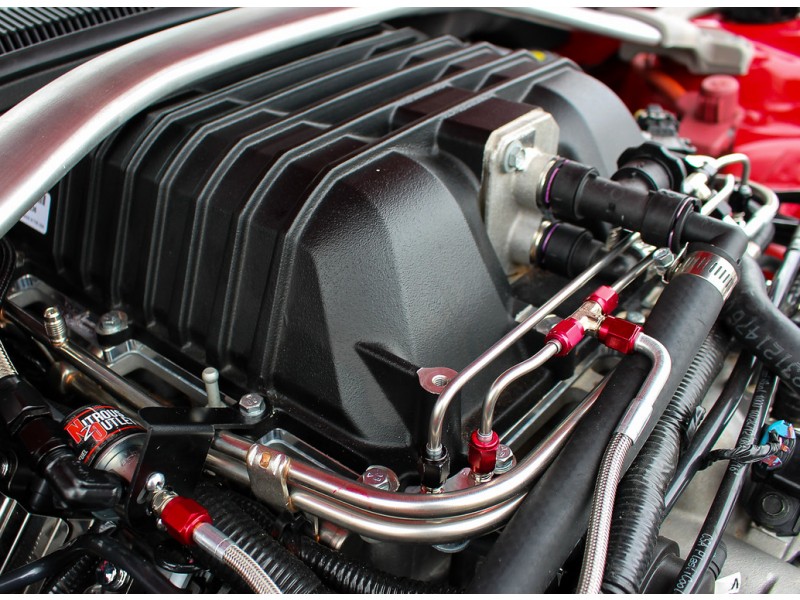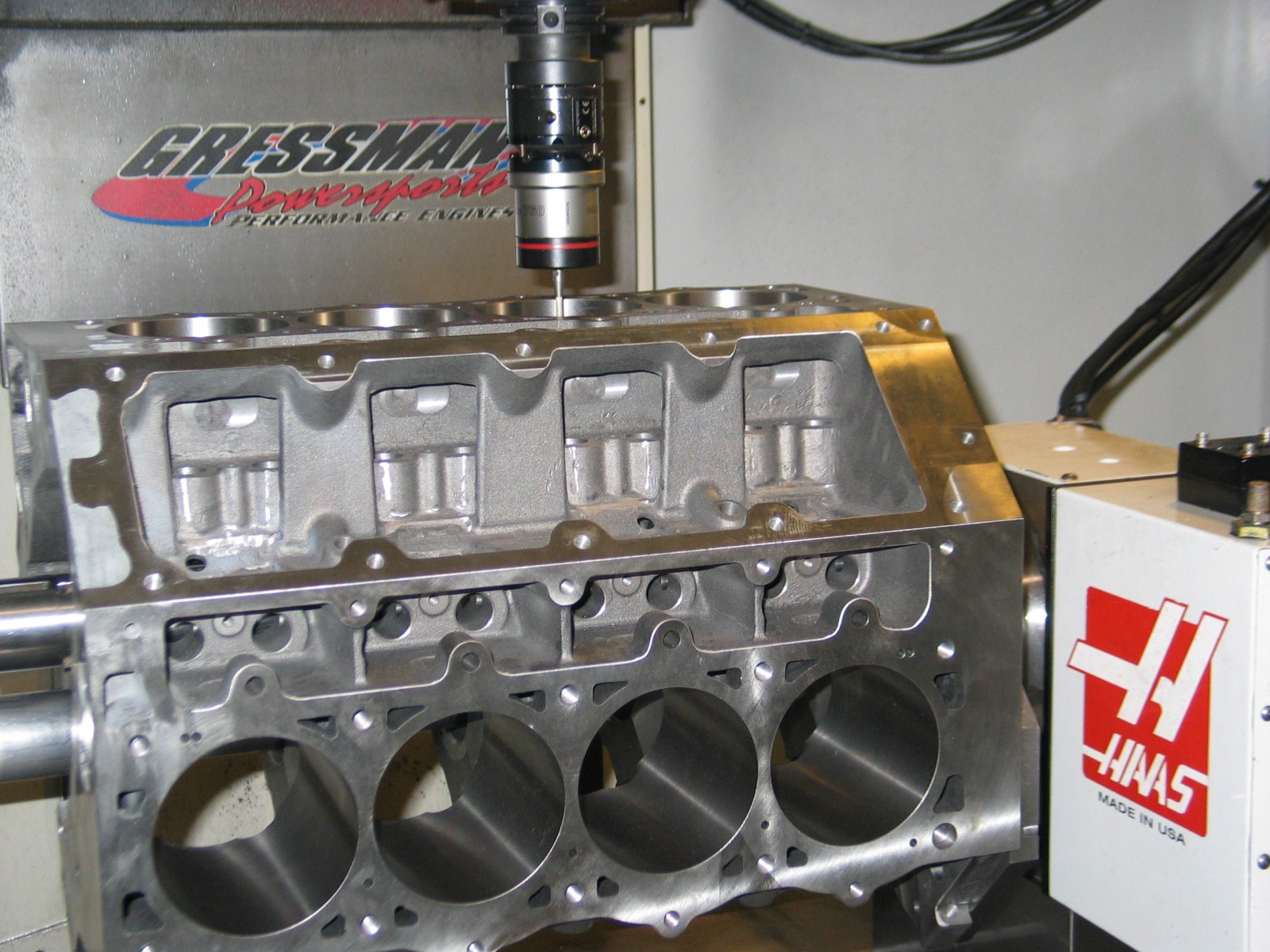
[Editor’s Note: This LSA engine upgrade guide is part of a series of LS engine upgrade guides assembled by a team of LS experts at Summit Racing that we are sharing at OnAllCylinders. For a primer on the entire LS engine universe, read LS Engines 101: An Introductory Overview of the Gen III/IV LS Engine Family.]
…
Intro to LSA Engines
The LSA is a supercharged, Gen. 4, 6.2L, aluminum block engine. LSA engines were available in GM performance cars between 2009 and 2015.
Built for performance, LSA engines didn’t use Active Fuel Management (AFM), Variable Valve Timing (VVT), or Flex Fuel (E-85) technology. The blocks were precision-machined using deck plates. They also had piston oil squirters to improve durability.
The LSA came equipped with rectangle port (LS3-style) cylinder heads. However, the supercharged heads were Rotocast for added strength. The engines also use the same 4.065 in. bore block. In fact, the engine block casting number is the same as the LS3.
…
[Every engine spec you’ll need can be found here: LSA Engine Specs: Performance, Bore & Stroke, Cylinder Heads, Cam Specs & More.]
…
What can I do to get more power out of my LSA?
The LSA engine makes a lot of power, and can easily make more!
Upgrades are usually done in stages. Each level will provide more performance than the one before it. However, they will also be more involved and expensive.
Tuning and Bolt-on Upgrades
The first upgrade we recommend is tuning the computer. This involves changing the fuel and ignition curves to optimize performance. A good tune can gain up to 40 hp on a stock engine. (Any significant upgrade will require re-tuning the computer.)
Upgrading a few bolt-ons at the same time makes sense. Here are some popular choices. (Note: In the links below, sort by year, make, and model to find the right part for your vehicle.)
…
Supercharger Upgrades

(Image/Nitrous Outlet)
With stock pulleys, the blowers spin around 16,000 rpm at redline. Changing the pulley sizes can spin it faster and increase boost. The next step on the upgrade path is a pulley swap. The chart below will give you some idea of what to expect.
| Engine | Upper Pulley | Lower Pulley | Blower RPM | Boost | Horsepower (at the wheels) |
|---|---|---|---|---|---|
| LSA | 3.000 in. | 7.800 in. | 16,900 | 9 psi | 475 hp (CTS-V) |
| LSA | 3.000 in. | 7.800 in. | 16,900 | 9 psi | 515 hp (Camaro ZL1) |
| LSA | 2.550 in. | 7.800 in. | 19,900 | 12-13 psi | +50 hp |
| LSA | 2.550 in. | 8.660 in. | 22,100 | 15-16 psi | +70 hp |
**If you change ONLY the upper pulley, you can still run premium pump gas. If you change both pulleys, you will need an octane booster.**
Increasing the speed of the supercharger will create more heat. You can lower the intake air temperature in several ways.
Other Upgrades to the 1.9L LSA Supercharger
- CNC porting = about 35 hp
- On a CTS-V, swapping in a Camaro ZL1 cover = about 15-20 hp
- Install the 2.3L LS9 blower = up to 90 hp
- Requires a special blower snout and other modifications.
…
Upgrading the LSA Fuel System
Both engines have the same injectors and dual fuel pumps. However, they max out around 65 psi. The fuel pumps are controlled by a module that increases fuel pressure in relation to boost. There are aftermarket pumps and voltage controllers that will work with the factory ECM to increase capacity.
- The stock injectors are good to about 600 hp at the wheels.
- The stock dual fuel pumps are good to about 650 hp at the wheels.
…
Top-End Upgrades for LSA Engines
The factory heads are based on the LS3 heads. However, they have a flow vane in the intake port. This helps emissions and idle stability, but reduces flow. CNC porting the heads is common. This removes the vane and improves airflow by about 70 cfm.
Aftermarket cylinder heads are another option. These heads will flow even better than ported stock heads and have thicker deck surfaces to withstand more boost.
Like other LS engines, a cam swap is common. The LSA has a very small camshaft. Upgrading to a LS9 camshaft is worth about 30 hp, however, it won’t make more power until 4,800 rpm. It’s really only worth it if you plan on running at high rpm.
Larger, aftermarket cams can add about 50 hp. Going as high as 0.630 in. of valve lift is also common.
The table below gives some information on what to expect from different cams. (Note: We are assuming a standard blower, pulleys, and tune on pump gas.)
| Engine | Intake Duration (@ .050 in.) | Exhaust Duration (@ .050 in.) | Lobe Separation (@ .050 in.) | Horsepower (at the wheels) | Idle Quality |
|---|---|---|---|---|---|
| LSA | 198° | 216° | 122.5° | 475 hp (CTS-V) | Smooth |
| LSA | 198° | 216° | 122.5° | 515 hp (Camaro ZL1) | Smooth |
| LSA | 215°-225° | 230°-240° | 115°-122° | +50 hp | Steady lope |
| LSA | 225°-235° | 240°-250° | 115°-122° | +75 hp | Mild chop |
Upgrading the camshaft will require the matching valve springs. Titanium retainers are also recommended. They will reduce the valve weight and prevent valve float.
The trunnion bearings in the stock rocker arms are a known weak point. We strongly recommend a trunnion upgrade kit. Swapping in a set of full roller rockers is another option.
…
Bottom-End Upgrades for LSA Engines
Detonation can occur if inlet air temperatures get too high and/or low-octane fuel is used. This will destroy the cast pistons in the LSA. Forged pistons are a smart upgrade. (The LS9 came with forged pistons from the factory.)
Due to extremely high cylinder pressure, the heads can start to lift around 1,000 hp. At that point, you will need to basically build a whole new engine. The following upgrades will be required.
- A stronger, aftermarket engine block with six head bolts per cylinder
- Cylinder heads with six bolts per cylinder
- A center-counterweighted crankshaft
- Forged steel connecting rods
- Forged pistons
Boring and Stroking LSA Engines

(Image/OnAllCylinders)
The cylinders can be honed 0.005 in. oversize. This keeps the walls thick enough to support boost. A 4.000-in. stroke crankshaft will also increase displacement. The chart below lists the specs for a common bore and stroke combination.
| Engine Size | Bore Dia. | Piston Comp. Height | Stroke | Rod Length | Wristpin Dia. |
|---|---|---|---|---|---|
| 6.8L (416 cid.) | 4.070 in. | 1.110 in. | 4.000 in. | 6.125 in. | 0.927 in. |
…
NOTE: You can find engine specs and detailed engine upgrade advice for every LS and LS-based Vortec truck engine in one place: The Definitive Guide to LS Engine Specs and LS Engine Upgrades.

[…] LSA Engine Upgrade Guide: Expert Advice for LSA Mods to Maximize Performance […]
Good info I am in the market of buying a gm build. Look forward to reading all the available links you’ve provided.
[…] [Looking to upgrade your LSA engine? Check out LSA Engine Upgrade Guide: Expert Advice for LSA Mods to Maximize Performance.] […]
Love the information, has helped
Well done the article was very informative, I’m an builder/ machinist ASE certified, I will be saving the article for future reference, thank you
Great info and in great detail. No 1 has come close online. Ty. From Australia.
Excellent and easy to understand by a non gear head like me. I am having an LS3 E rod package upgrade put in my 1990 FJ 62 Land Cruiser and want more torque for towing and will definitely use this guide when speaking with a California shop on a supercharger option that keeps me in the smog approving zone of CARB. Thanks for the great info, Steve
Why know add E-85 kit to run the flex fuel…I understand adds an additional 75-100 hp…
Currently running a stock engine with 1.75″ long tube headers on an LSA crate motor… 90lb Deatchworks injectors and a 9.55″ bottom pulley with a 3″ blower pulley yields 12-13 lbs of boost. Combination delivered a solid 640RWHP on a 91 octane pump gas tune. All deto sensors and their settings still in play, so it starts pulling timing on a hot Alberta day at 135F. 10.8 1/4 mile in a 3650lb race weight 68 Camaro ragtop. Putting a cam and an E85 tune in it this winter. Expect it will produce another 125 safe RWHP.
Dear Sir or Madam, I have a 2015 5th gen camaro zl1, a different thermostat has been installed so far, 10mm lid spacer, kooks exhaust manifold, cold air intake, and an ecu tuning, the engine has done 622 hp so far, now I would like to have more boost pressure upper pulley 2.55, is that still possible without changing the injectors? Sorry for my bad English I’m from Germany. Kind regards Marcel